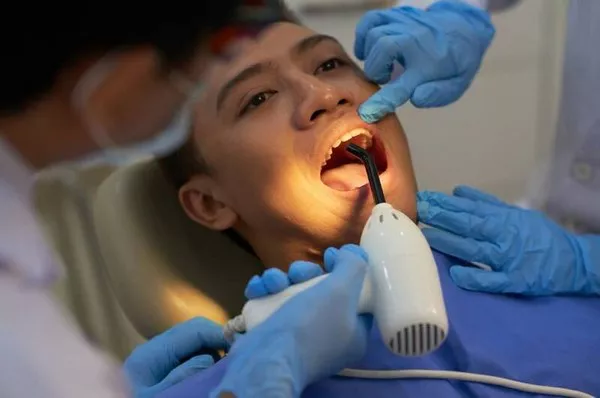Wisdom tooth extraction is a common dental procedure, and post-operative care plays a pivotal role in ensuring a smooth recovery. Among the recommended practices, the use of ice is often emphasized to manage swelling and discomfort. In this comprehensive guide, we explore the nuances of using ice after wisdom tooth extraction, addressing the duration, benefits, and best practices for incorporating this cooling technique into your recovery routine.
Understanding Wisdom Tooth Extraction: A Brief Overview
Purpose of the Procedure: Wisdom teeth, also known as third molars, are often removed due to impaction, crowding, or potential complications with oral health. The extraction process involves creating surgical wounds or sockets where the teeth once resided.
Post-Operative Care Importance: Following wisdom tooth extraction, proper post-operative care is essential for managing potential complications, minimizing discomfort, and promoting optimal healing. The use of ice is a key component of this care plan.
The Role of Ice: Addressing Swelling and Discomfort
Swelling Management: Ice serves as an effective tool to manage post-operative swelling. Applying ice to the affected areas helps constrict blood vessels, reduce blood flow, and limit the extent of swelling around the surgical sites.
Pain Relief: In addition to managing swelling, the cooling effect of ice provides localized pain relief. It numbs the nerve endings, alleviating discomfort and contributing to a more comfortable recovery experience.
Immediate Post-Surgery Period: The Prime Time for Ice Application
First 24-48 Hours: The immediate aftermath of wisdom tooth extraction is the prime window for ice application. During this period, the body’s inflammatory response is at its peak, and the application of ice helps control swelling and discomfort effectively.
Intervals and Duration: Applying ice for 15-20 minutes at intervals of every 1-2 hours during the first 24-48 hours is a recommended approach. This ensures consistent cooling without the risk of damaging the skin or affecting blood circulation.
Best Practices for Ice Application: A Gentle Approach
Use of Ice Packs or Cold Compresses: Wrap ice in a thin cloth or use a cold compress to avoid direct contact with the skin. This prevents frostbite or injury to the delicate tissues while ensuring a controlled and comfortable cooling effect.
Avoid Prolonged Direct Contact: While the application of ice is beneficial, avoid prolonged direct contact with the surgical sites. Overdoing it can potentially cause tissue damage or compromise the natural healing process.
Transition to Alternatives: Warm Compresses and Oral Rinses
Beyond the First 48 Hours: As the initial inflammatory response subsides, transitioning to warm compresses may be recommended. Warmth promotes blood circulation and relaxation of the jaw muscles, aiding in overall recovery.
Gentle Oral Rinses: Incorporating gentle oral rinses with saltwater or prescribed mouthwash can contribute to maintaining oral hygiene while avoiding the need for direct ice application beyond the initial phase.
Individual Variability: Listening to Your Body
Response to Ice Application: Individual responses to ice application may vary. Some individuals may find significant relief, while others may prefer alternative methods. Listening to your body and adjusting the approach based on comfort levels is key.
Consultation with Dental Professional: If there are concerns or uncertainties about the duration and frequency of ice application, consulting with the dental care team is advisable. They can provide personalized guidance based on your specific case.
Post-Operative Care Harmony: Balancing Ice and Other Measures
Medication Adherence: Alongside ice application, adhering to prescribed pain medications and anti-inflammatory drugs is crucial for comprehensive pain management and swelling control.
Rest and Elevation: Incorporating proper rest and elevating the head while sleeping can further aid in reducing swelling and promoting optimal healing. These practices complement the benefits of ice application.
Conclusion: A Cool Companion on the Road to Recovery
In conclusion, the use of ice after wisdom tooth extraction is a valuable and time-sensitive practice that contributes to managing swelling and discomfort during the initial post-operative period. Applying ice at regular intervals, for controlled durations, helps harness its anti-inflammatory and pain-relieving properties effectively.
As the recovery progresses, transitioning to alternative measures like warm compresses and oral rinses ensures a harmonious post-operative care routine. Individual variability in responses calls for a personalized approach, with open communication and consultation with the dental care team playing a crucial role.
Incorporating ice into your post-operative care routine is akin to having a cool companion on the road to recovery. By following best practices, listening to your body, and maintaining a holistic approach to post-operative care, you pave the way for a more comfortable and successful healing journey after wisdom tooth extraction.
When Is Pain The Worst After Wisdom Teeth Removal
When Can You Start Chewing After Wisdom Teeth Removal
When Can I Eat Sushi After Wisdom Teeth Removal






























